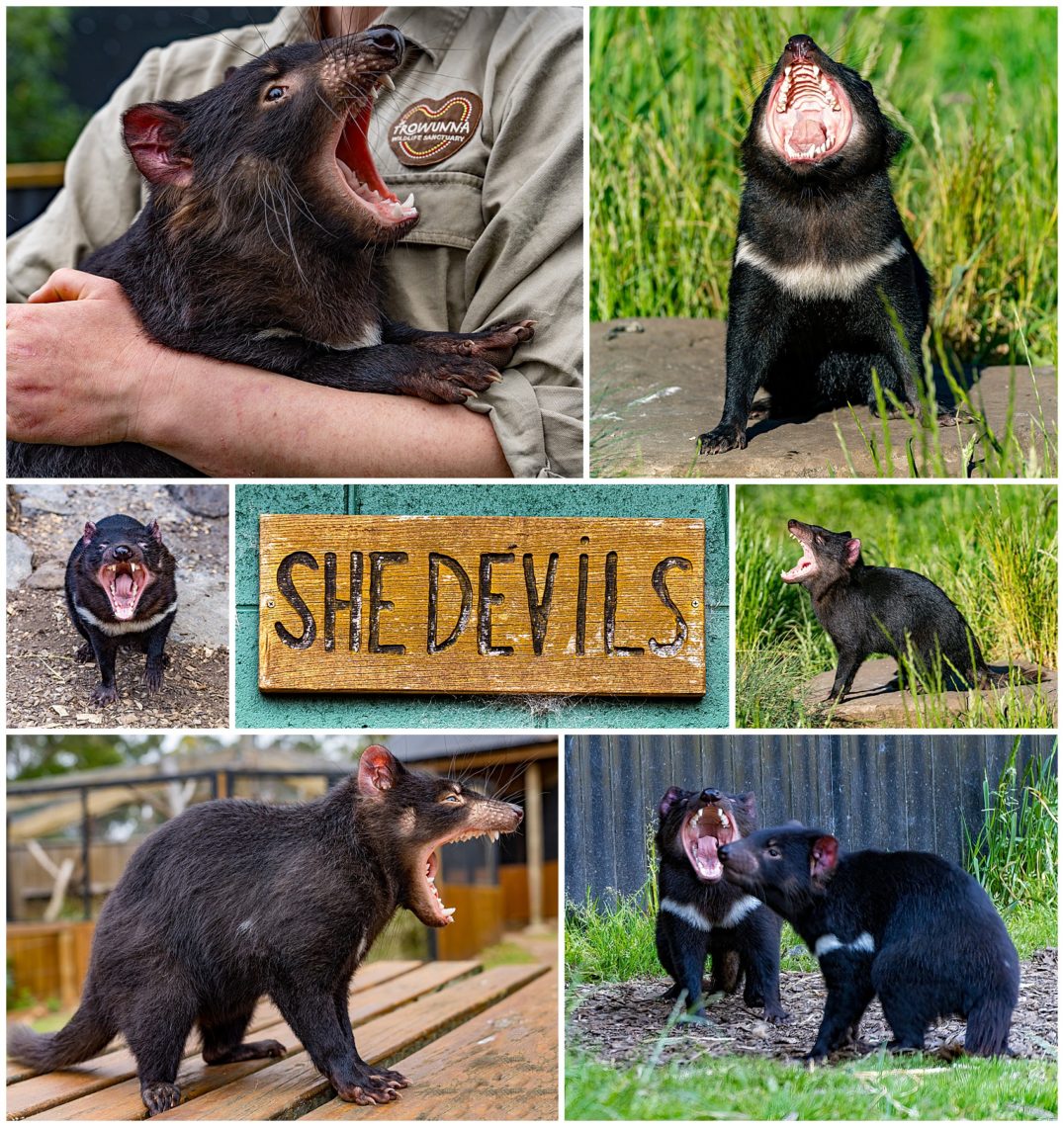
Up to this point, we had travelled to 99 countries. We wanted #100 to be special, so we decided to go to Tasmania. Officially, Tasmania is an island state of Australia, but the list of countries we use to count is from the Traveler’s Century Club, where membership requires having traveled to 100 countries. Here’s the link to their official list of 330 countries.
We decided that while we were exploring Tasmania, we had to see the Tasmanian Devil, an endangered species who are now seriously threatened by a cancerous face tumor. There are only between 15k-20k devils left in the wild. Here’s what we uncovered.
TASMANIAN DEVILS ARE SCREAMERS !
If a wolf howling at the moon sends shivers up your spine, wait until you hear a Tasmanian devil. In fact, the first Europeans to enter Tasmania imagined demons lurking in the bush when they heard the blood-curdling shrieks and growls. Hence being dubbed ‘devils’. It’s now known that their various vocalisations (coughs, growls, snorts, sniffs, screeches and even sneezes) are designed to scare off other animals.
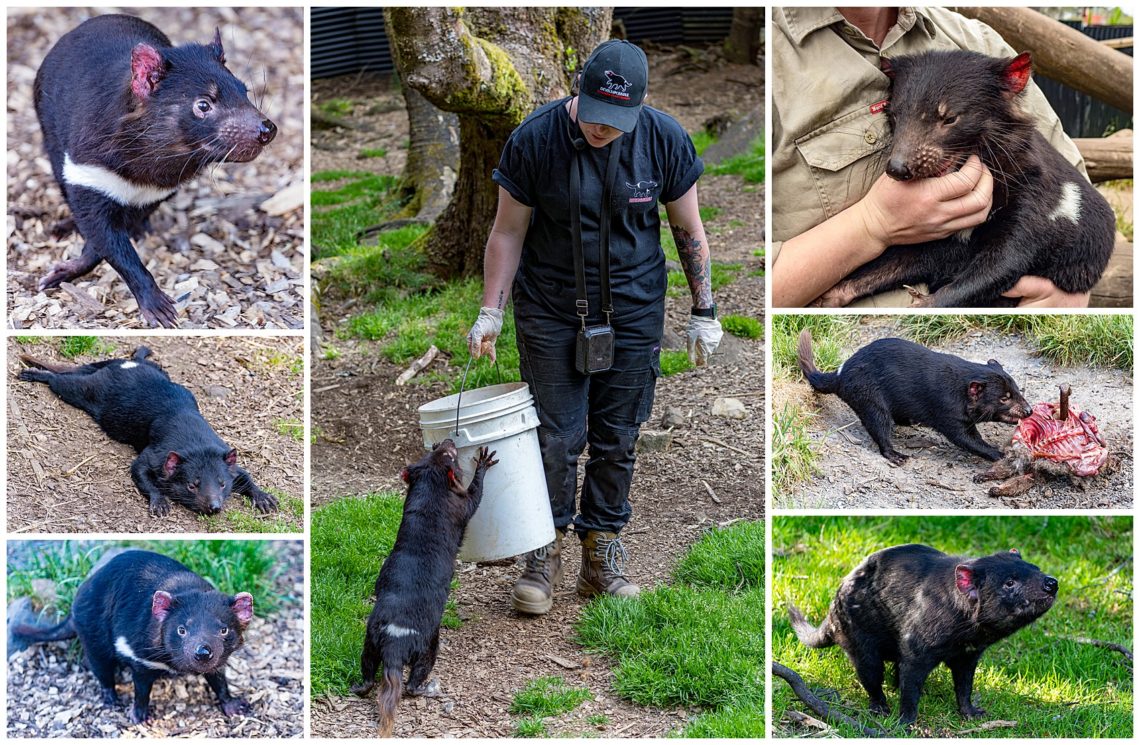
THEY YAWN WHEN CONFRONTED
Tasmanian devils are very timid and don’t normally pose a danger to people unless they are attacked or trapped. However, when they do feel threatened, they do strange ‘yawns’, showcasing their sharp teeth. While this looks quite fierce, it is actually more a display of fear and anxiety than aggression. Be mindful these wild animals have a strong bite, like a hyena’s, and can bite through your fingers.
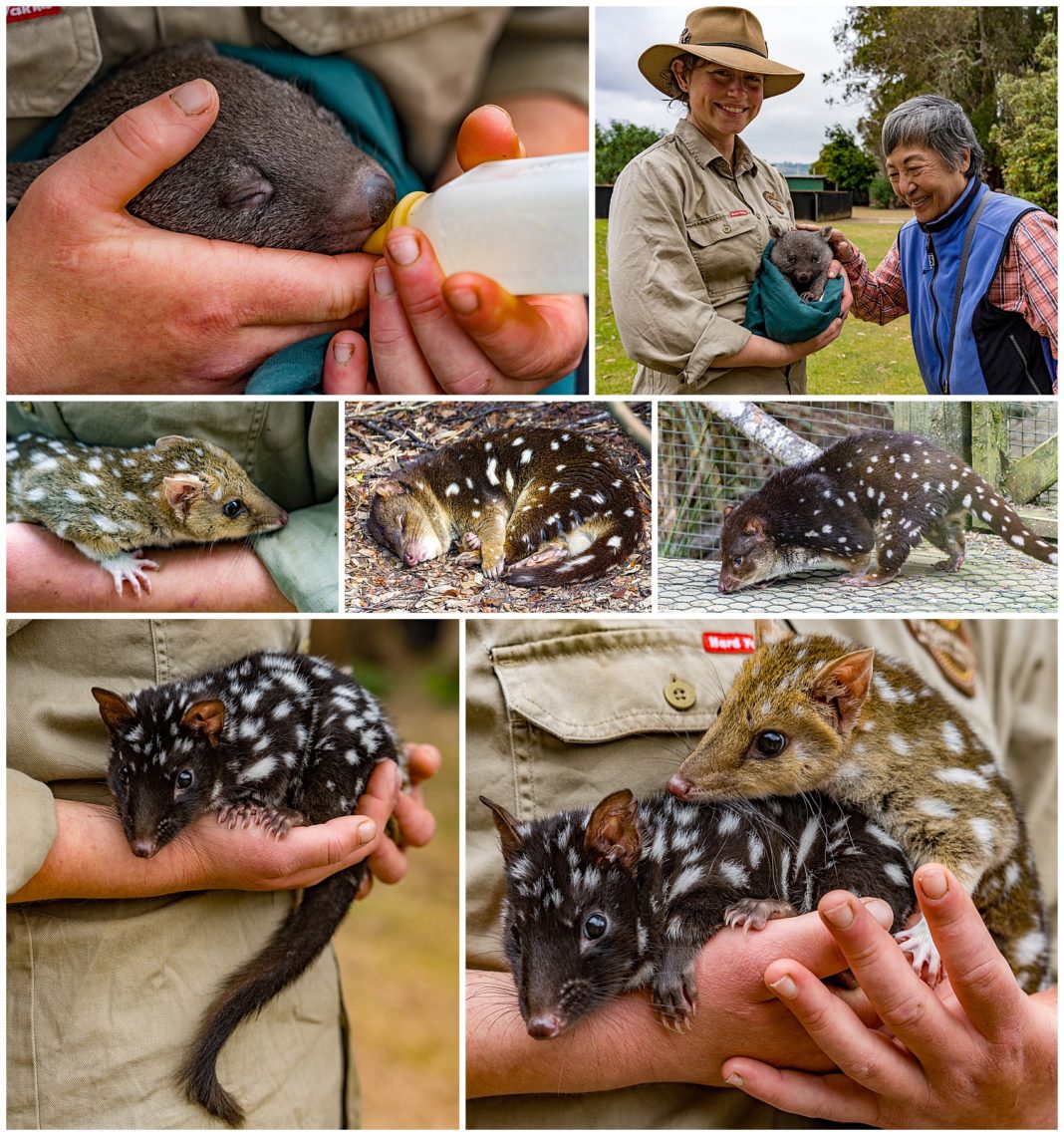
Two of the best places to see the unique animals of New Zealand are at the Cradle Mountain Wildlife Sanctuary and the Trowunna Wildlife Sanctuary in Mole Creek. Be sure to go at feeding time, since they are nocturnal animals and are sleeping until feeding time. The animals are fed with farmed wombats and other cut up animals, both for food safety and stability of food supply. They are not the road kill, which we saw every kilometer while driving.
We took a private tour and got introduced to a few babies — a baby wombat (top row), and some baby quolls (bottom two rows), which are closely related to the Tasmanian Devil. A mother Tassie devil gives birth to approximately 20-40 joeys at any one time, but the mom only has 4 teats. Truly a test for survival of the fittest. The survivors live in their mom’s pouch for 3 months. After survival, many animals are released back into the wild.
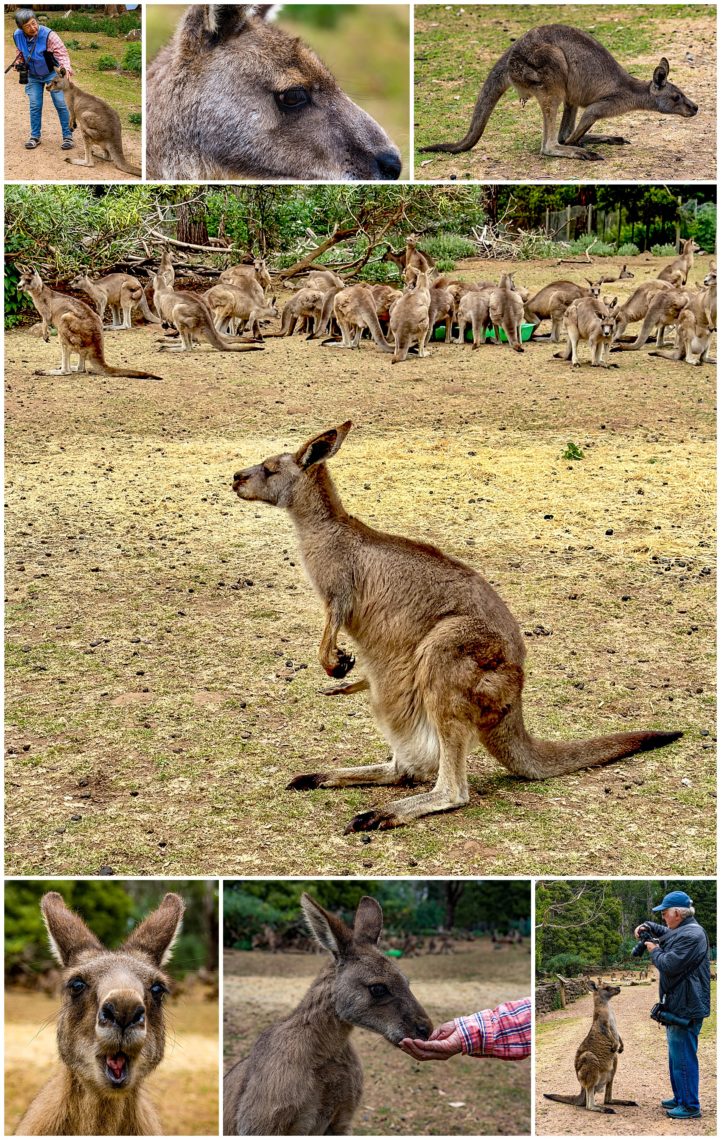
At the end of each tour, we were handed a bag of kangaroo food. When we walked over, the kangaroos were so exuberant that they surrounded us and jumped onto our chest to reach the food.
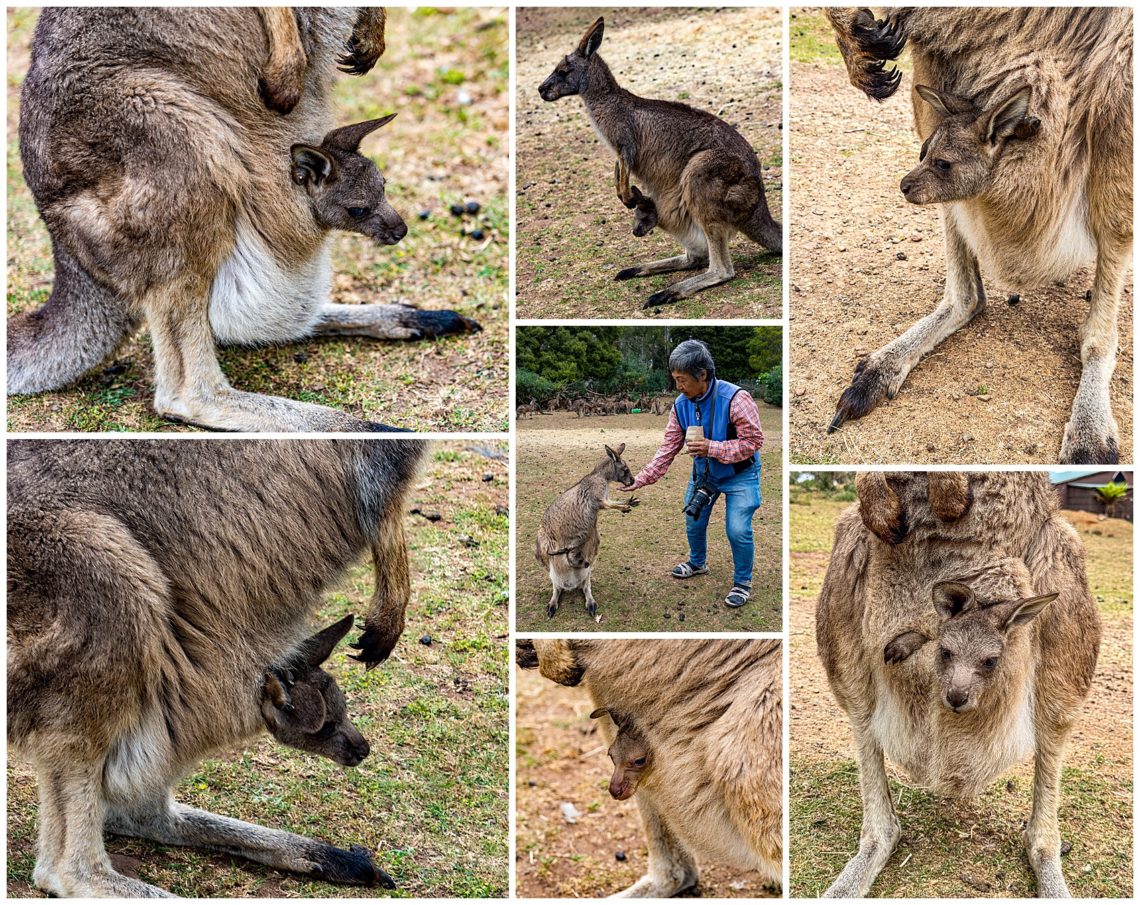
We saw several moms with the joeys hanging out of their pouches, many times with just the long legs sticking out of the pouch. It turns out that a kangaroo can give birth to up to 3 joeys each year, and when one leaves the pouch, another can take its place. The joeys remain in the pouch for 9 months and can suckle until 12-17 months. The joeys are extremely flexible when in the pouch, and sometimes its feet would be sticking out right beside the head (lower right).
We always thought of kangaroos as wild, but these man-raised kangaroos were more like children. A baby kangaroo or any marsupial is called a Joey, because the local aboriginal word stands for “little animal”.
We loved Tasmania, which is known for their wild and beautiful landscape, clean air, eco-tourism, abundant marine life and exporter of wild abalone and lobster. Now that we’ve become centurions and reached our 100th country count, our goal is change the way we travel in the future. Most of our future travels will extend the amount of time at each place, instead of living out of our suitcases for months at a time.